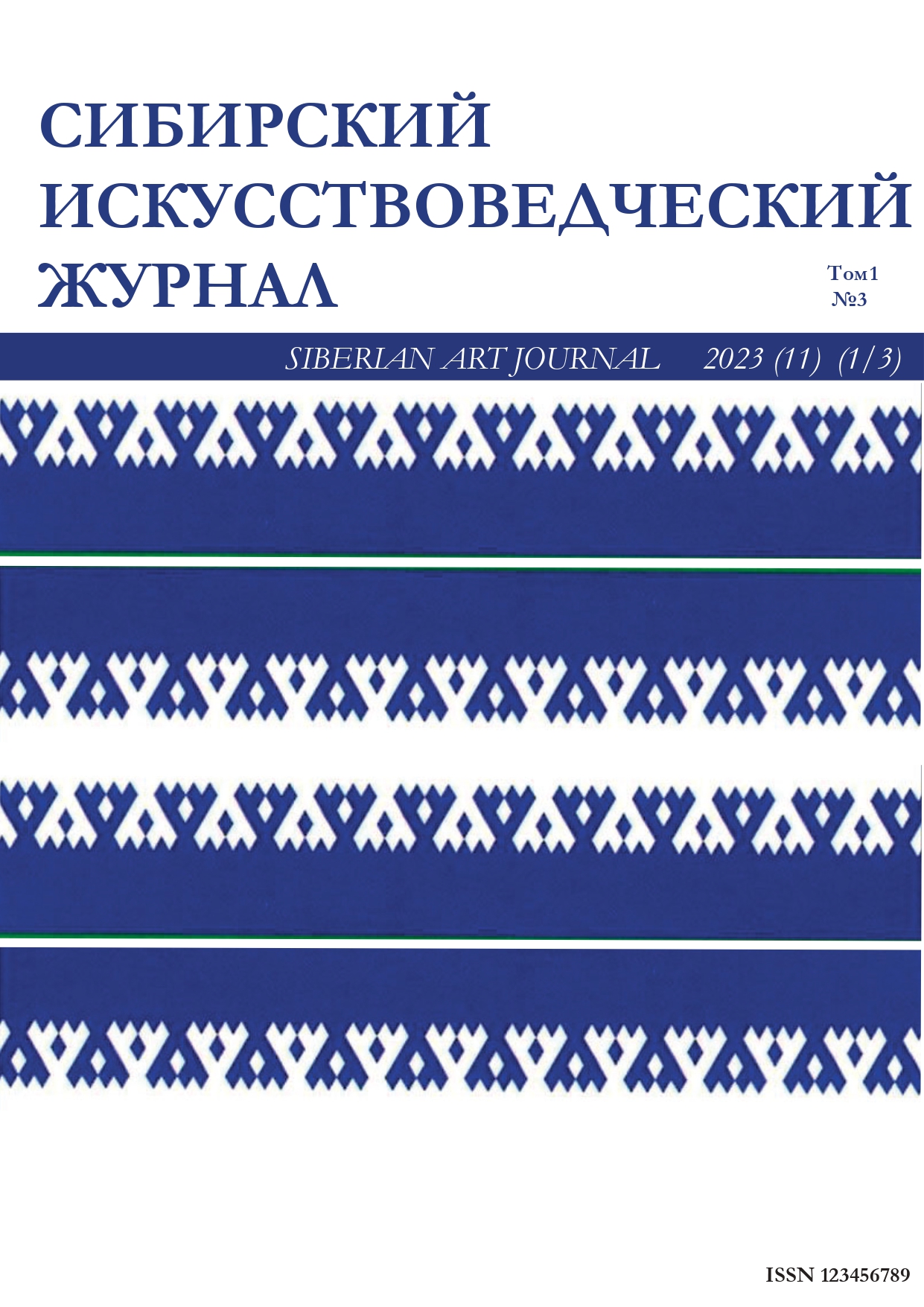Russian Federation
The article is devoted to the study of two type’s fine art interaction – cinema and icon painting. Based on the comparative work analysis of ancient Russian iconography «The Almighty Saved», created by Andrei Rublev at the beginning of the XV century, and the cinematography work «Andrei Rublev», directed by Andrei Tarkovsky in the second half of the XX century. Article authors explore the openness and dialogic system nature of artistic culture, the works relationship of different eras, prove the belonging of cinema to the ancient language tradition, development of fine arts and determine the religious specifics of the world picture and Russian cinema. Iconography is characterized in the study as the object-language of Andrei Tarkovsky's cinematography.
cinema, painting, Old Russian iconography, Andrey Rublev, Andrey Tarkovsky, art object-language
1. Alexander-Garett L. (2009) Andrey Tarkovsky: the collector of dreams. Moscow: AST, Astrel, 509.
2. Anokhina Yu. (2007) Tarkovsky: musical quotations. The Art of Cinema, 4, 96-105.
3. Evlampiev I. (2012) Artistic philosophy of Andrei Tarkovsky. Ufa: ARC, 472.
4. Salinsky D. (2009) Tarkovsky's Kinogermeneutics. Moscow: Quadriga, 576.
5. Tarasova M. V. (2010) Communicative foundations of artistic culture. Krasnoyarsk: Siberian federal university, 145.
6. Tarasova M.V. (2015) Theory and practice of dialogue between the viewer and works of art. Krasnoyarsk: Siberian federal university, 236.
7. Tarkovsky A. (2002) Imprinted time. Archives, documents, memoirs. Moscow: Horseshoe, Eksmo-Press, 514.
8. Tarkovsky A. (1989) Lectures on film direction. Moscow: Lenfilm, 120.
9. Tarkovsky A. (1991) About cinema art: interview. The world and the films of Andrei Tarkovsky. Moscow: Iskusstvo, 315-326.
10. Tarkovsky A. (1989) XX century and the artist. The Art of Cinema, 4, 86-106.
11. Dalle Vacche, A. (1996) Cinema and Painting. How Art is Used in Film, Austin: University of Texas Press, 320.
12. Felleman, S. (2006) Art in the Cinematic Imagination, Austin, TX: University of Texas Press, 213.
13. Jost, F. (1990) ‘Le Picto-Film’, in R. Bellour (ed.), Cinema et Peinture - Approches, Paris: Presses Universitaires de France, 109-22.
14. Pethó, Á. (2010) ‘Intermediality in film: A historiography of methodologies’, Acta Univ. Sapientiae, Film and Media Studies, 2, 39-72.
15. Pethó, Á. (2011) Cinema and Intermediality: The Passion for the In-Between, Newcastle upon Tyne: Cambridge Scholars Publishing, 499.
16. Peucker, B. (1995) Incorporating Images: Film and the Rival Arts, Princeton, NJ: Princeton University Press, 240.
17. Peucker, B. (2007) The Material Image: Art and the Real in Film, Stanford: Stanford University Press, 272.





